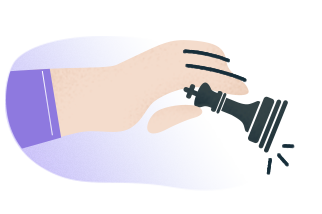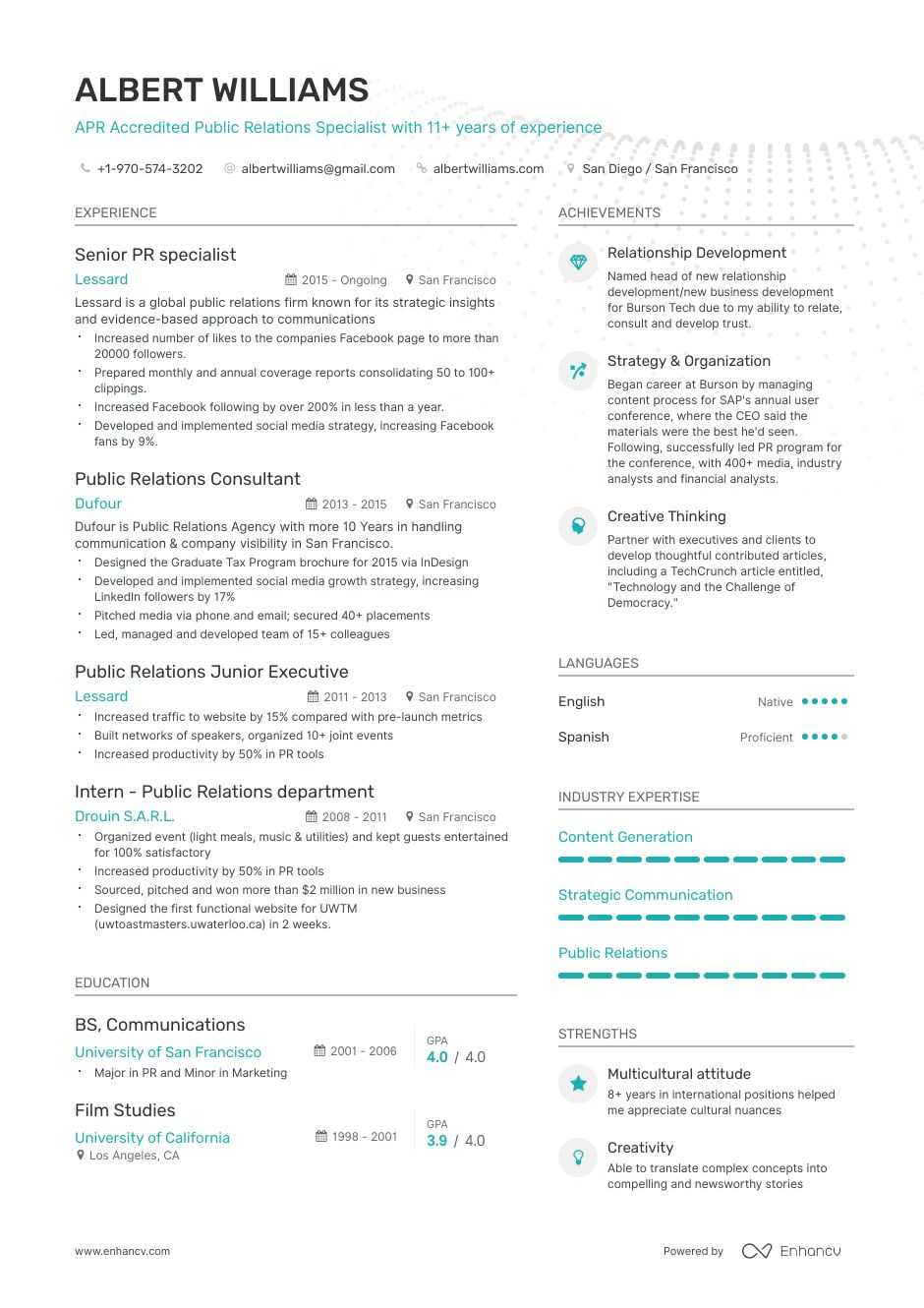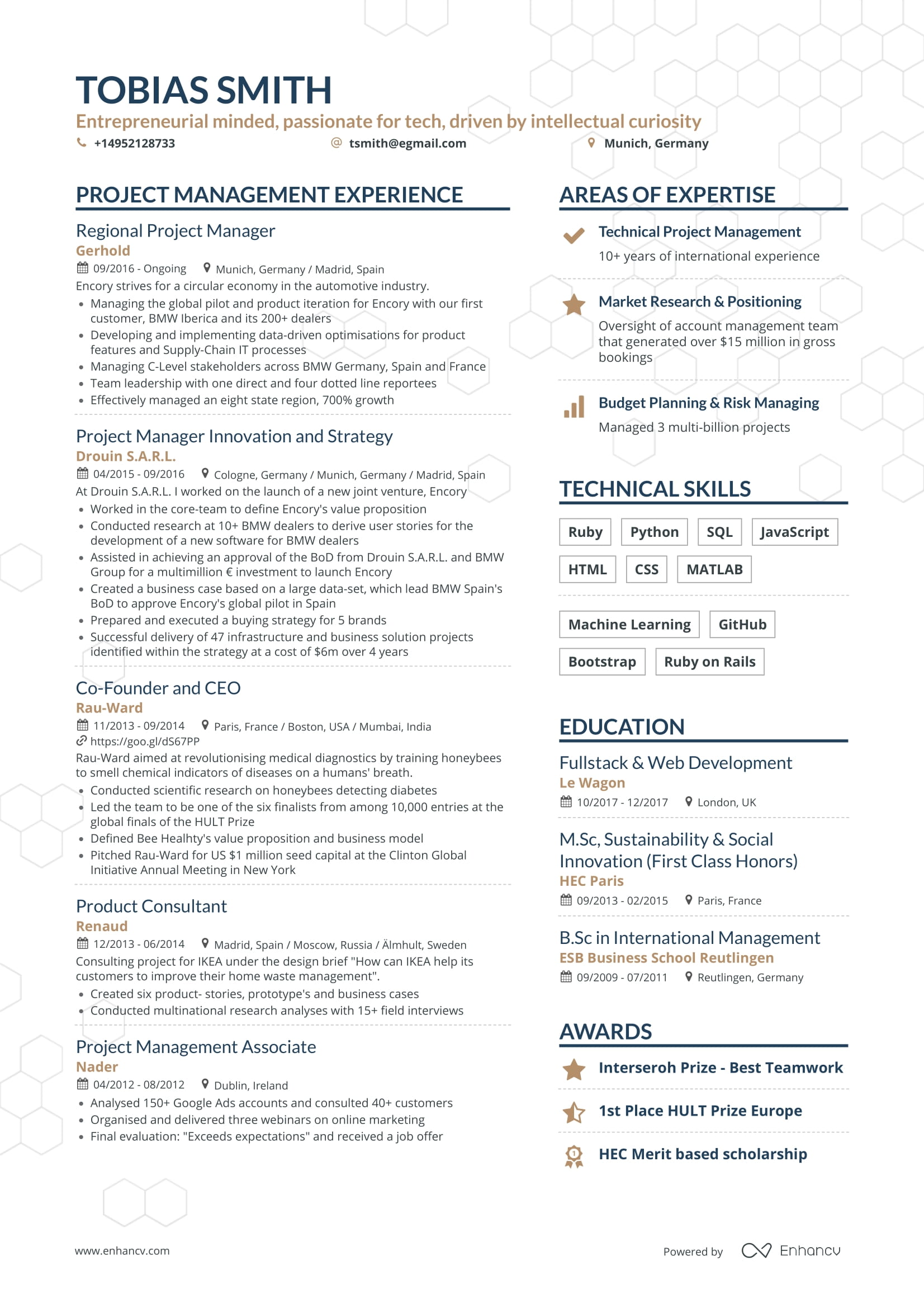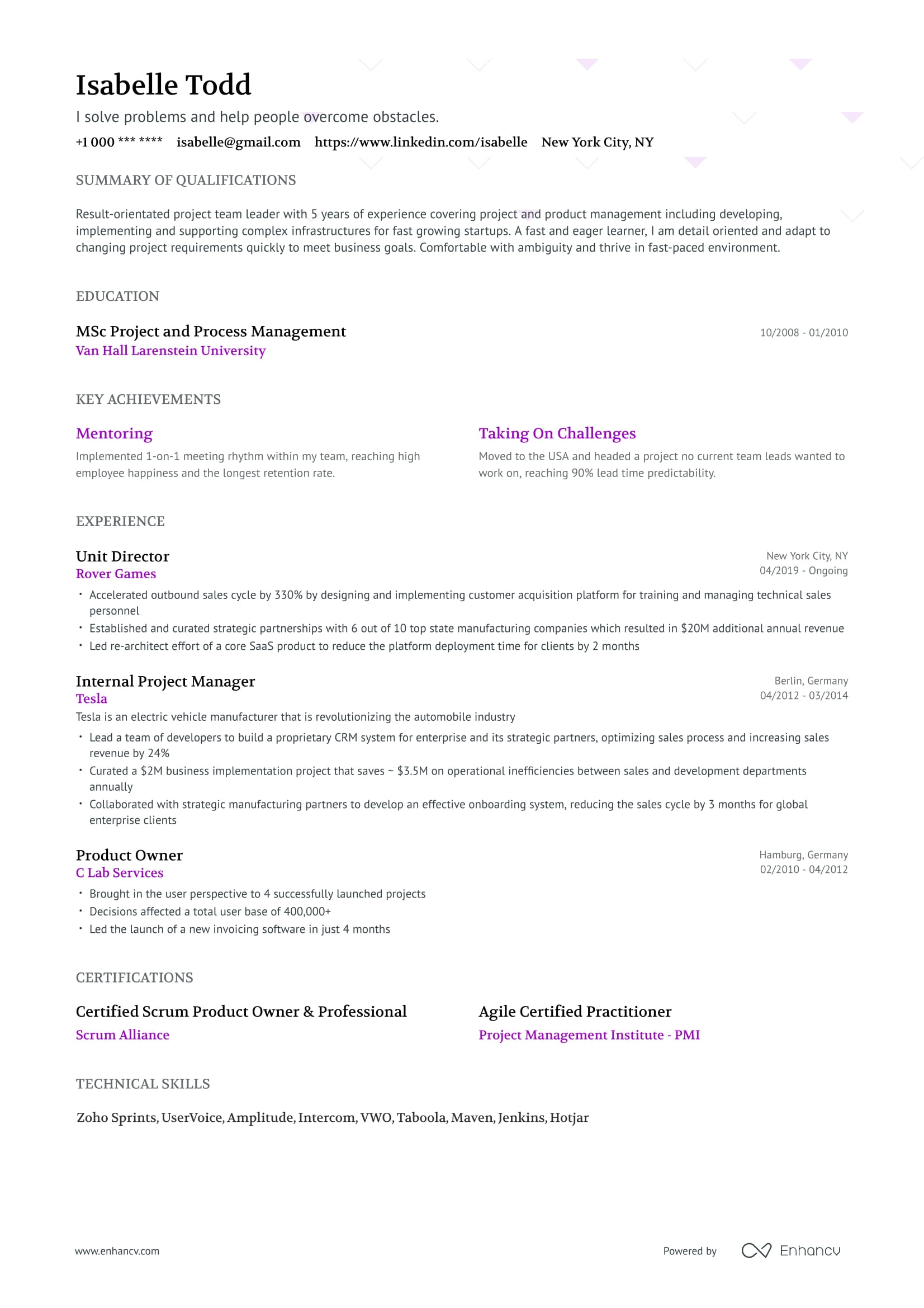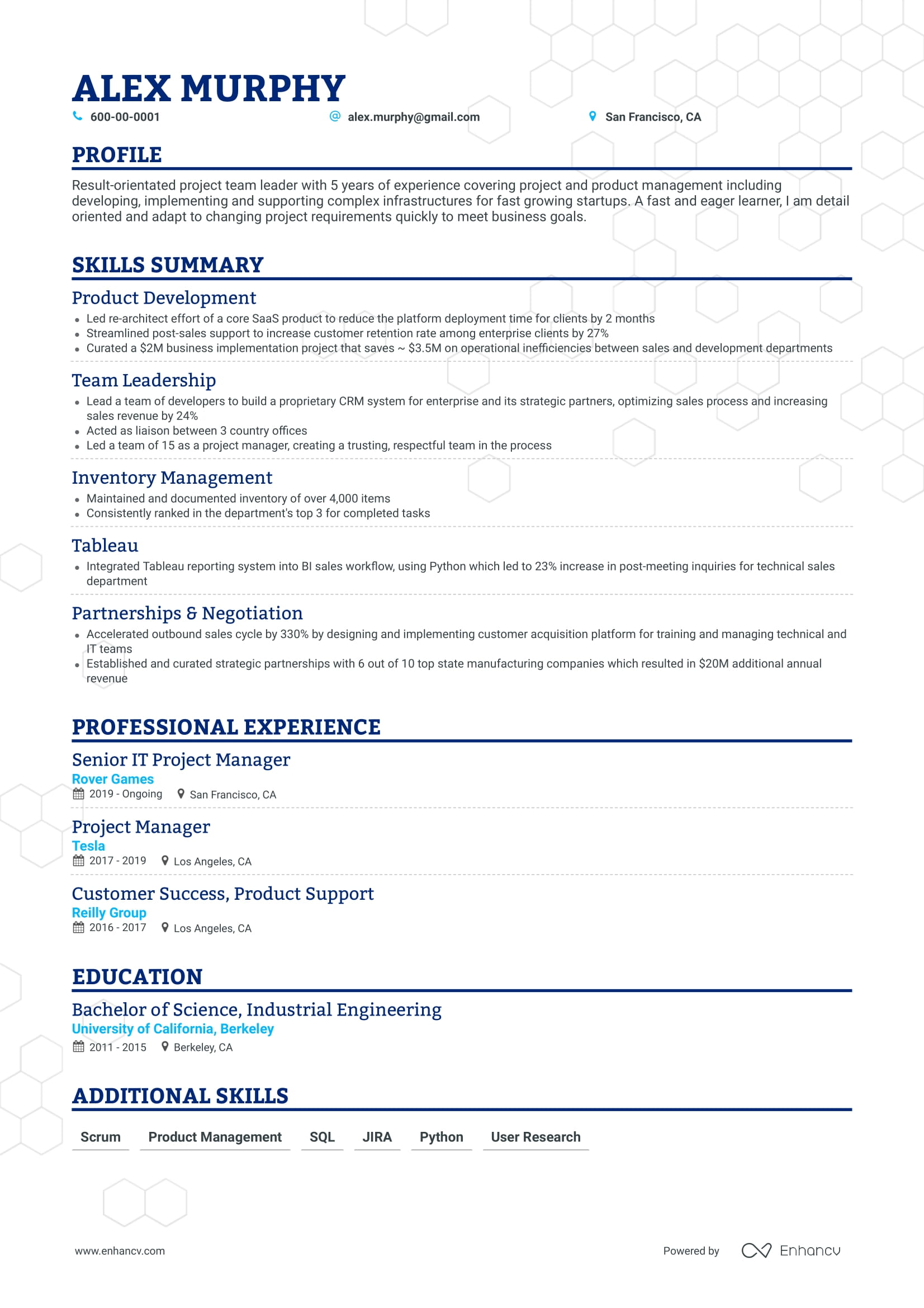Example Public Relations Specialist Resume - Browse more resume templates and build a stand-out resume
Today, you’ll know what makes a perfect Public Relations Resume.
Let’s start with a simple fact.
Public Relations is the business of Persuasion.
If you can’t convince a recruiter you are the right fit, how can you persuade an audience to buy your products, recognize your position or promote your idea?
That’s why we’ve designed this guide to take you through every stage of writing a compelling Public Relations resume.
What will you learn here
- 9+ Resume examples and samples that got real people hired;
- Explore best practices when compiling resume header and summary;
- How to make your career proudest moments work for your application;
- How to take advantage from a skills and certifications resume section;
- What employers want to read in your experience section;
Take a look at this Public Relations resume example
How does it stack up to yours?
Let’s see what you are missing out on!
How to write a Public Relations resume to be proud of
In PR, you are expected to be “in the know”.
Knowing what can make or break your resume can take you from zero to hero.
Let’s explore the 6 most common mistakes on PR resumes and how to avoid them:
- Your resume is not tailored to the specific job
- Not proofing your resume
- You didn’t show knowledge of the industry
- No specific achievements highlighted
- No mention of traditional PR skills
Mistake #1 - You didn’t customize your resume
Just like you send different tailored pitches to journalists and bloggers, you should take care of your resume personalisation.
The job calls for experience in writing press releases but you went all in on organising events?
It’s probably that you didn’t read the job ad and you send the same copy-pasted “personalized” info to every employer.
Mistake #2 - You didn’t check your resume for grammar and language
It’s public relations. You are supposed to be a better writer than 95% of Earth’s population.
This calls for no spelling mistakes so double and triple check before sending.
Mistake #3 - Failed to prove you know the business lingo
How you style your tone and writing matters. Your word choice will be put under scrutiny.
Applying for a PR agency?
You don’t have to keyword stuff your resume with words like “client profitability”, “agency experience” and “billable hours”.
Nevertheless, cleverly position them in key places like in your experience section or your resume summary (more on that below).
Mistake #4 - You didn’t highlight your achievements
Job responsibilities fade in importance to results.
Did you increase percentage in sales or traffic to your client’s website?
Did your actions bring positive customer reviews?
PR Industry is built on numbers. Make sure to feature them in your resume.
Mistake #5 - No mention of classic PR skills
Lines between marketing professions blur.
Nowadays, PR specialists can be easily mistaken for Content Marketers or Advertisers.
However, you still have to be familiar with the old timer skills that are still relevant today: news releases, speechwriting and internal communications among them.
Adding anything extra will make your resume cluttered and most probably, over 1 page.
Most appropriate format for Public Relations specialist resumes
If you got the experience, you can’t go wrong with reverse-chronological format.
It puts your related job history in the front rows.
Hybrid resumes, on the other hand, are well-suited to PR applicants with diverse backgrounds in the niche.
It gives weight to both skills and experience. If you are making a career change or you assumed multiple roles in previous companies, you can fully take advantage of hybrid layout.
Interested to learn more about how to get the maximum out of a reverse-chronological layout? Then read our guide:Is Reverse-Chronological Layout the Right for Me?
Have a minute for a few case studies on proper usage of hybrid resumes? Then our article is your best choice:Crafting The Perfect Hybrid Resume
Creating the right Public Relations resume header
First and foremost, think about what a header is going to achieve - giving your name and contact data, linking to your portfolio and setting the overall tone.
As a PR, you know first impressions count the most in cultivating successful relationships with media.
Placing a few power keywords garnered with a springboard link to your personal website makes for a killer start.
Let’s examine that in practice.
See the difference?
The first header is bland, deprived of passion and confidence.
The second, on the other hand, is well optimised for that initial screening step.
As a recruiter, you can follow up and examine Antonio’s portfolio. Moreover, the mention of certificates shows the candidate has confidence in their skills.
Moving on to the next section.
How to write a standout PR resume summary or resume objective
Pretend for a second you are on the receiving end of your press release.
Do the first few lines tell the main story? Why you should care right here and now?
Same is the deal with your career summary.
In just a few short sentences, you should be able to explain who you are and why you are the perfect candidate.
So, should you choose a career summary or objective?
A career summary talks about your overall achievements and progress in PR field. Suitable for senior PR specialists or executive positions.
A career objective, on the other hand, focuses on the skills you have and what you’re looking forward to bring to the company. It’s fitting for entry-level applicants and career-changers.
Your best approach when writing a career summary will be to focus around your proudest moment and dress it up in hard numbers.
When composing the career objective, make sure to mention your relevant strengths and give a strong statement of who you are.
Time to put this theory in practice.
2 Public Relations resume summaries
This summary falls short to explain how many years you’ve been in the field and what have you achieved.
Now this one shouts “You’re looking at the next Richard Edelman right here!”.
Surely you can put this info someplace else, but don’t miss your only chance to tell a consistent career story.
Let’s now examine 2 Public Relations resume objectives
Where the first one fails, the second one delivers. It’s focused on exactly what the candidate can bring to the table.
The wrong example doesn’t show examples of previous work, be it internship, volunteering, or any other notable achievements.
How to describe experience on Public Relations resumes
In public relations roles, results matter. You are missing a big chance to influence the recruiter’s decision by talking metrics, not responsibilities.
People won’t hire you because you “can maintain a PR database” or you “can write press releases”. They want to see how you prove your value with quantifiable achievements, such as:
- How many readers did your content reach?
- By what percentage did you increase online positive reviews?
- What big media publications featured your pitches and what was the subsequent result?
Let’s examine how results make all the difference.
2 Senior PR specialist resume experience sections
Essentially, the bullet points are all the same experience.
But the second example brings up front goals and results that relate directly to business goals.
What should Entry-Level Public Relations resumes should look like?
Before everything else, you need to know your niche and what moves you.
You can’t really go into a field without knowing little or absolutely nothing.
What if you had experience in sports PR, but you apply to a firm that handles tech media inquiries.
Your most likely answer to any question would be: “...Ugh!?”
Show passion for the industry, and bring up some metrics again, to back up your claims.
You’ve managed a social media account? Great. Tell recruiters what was the follower growth.
You’ve sent messages to key demographics? Awesome. Explain the process and what it resulted in.
2 Entry-level Public Relations resume experience samples
Listing certificates on your PR resume: what you should know
There’s more than 21 000 members of the Public Relations Society of America.
Just under 20% of them are holding an APR (Accredited in Public Relations) certification.
So, is there any benefit in getting certified?
It might not make you a better practitioner than the rest. You could be phenomenal at PR without an APR title after your name.
But research, evaluation, implementation and PR ethics hold industry standard principles that never change and remain at the core of APR.
With that being said, if you are looking to get certified in Public Relations and showcase that on your resume, here’s a list of the top programmes.
Top 3 Certifications in Public Relations on resumes
- Accreditation in Public Relations
- Accreditation in Public Relations and Military Communications
- Certificate in Principles of Public Relations
Does my resume need an education section?
Let’s face it - every profession requires practice on the field.
Gaining more experience in your Public Relations jobs will make your education fade in importance to practical skills.
But if you have graduated recently, make sure to find its place.
To make it stand out, you can include:
- Field of study
- GPA (but only if higher than 3.2)
- Any notable achievements (Student awards, projects featured in media);
How a skill section helps a resume deliver the right message
Never include skills on your resume you can’t prove you own. Saying you are good with AP Style or you have an eye for Visual design won’t mean a lot.
Whenever possible make sure to include real examples which demonstrate your skills.
You can have those either in the experience or summary sections, or have a separate “Proudest Moments”, or “Career Highlights” box in your resume sidebar.
However, if you skip on the skills, you risk getting sidetracked by the Applicant Tracking Systems.
They analyze resumes based on job ad skills so make sure you’ve got as much coverage as possible.
Let’s see which skills you can feature.
Top 13 Hard Skills on PR Resumes
- AP Style
- Website Copy
- Media Outreach
- Speech Writing
- Press Releases
- Editing
- Journalism
- Media Relations
- Visual design acuity
- MS Suite
- PR Measurement
- SEO
- Social media advertising
For most of the above, you can present a certification, course or education degree to prove you’ve got them. You can also present a situation where you used them to achieve results.
Top 14 Soft Skills for every Public Relations specialist
- Listening
- Public speaking
- Verbal communication
- Persuasion
- Negotiation
- Coordination
- Honesty
- Confidence
- Charisma
- Adaptation to change
- Multitasking
- Attention to detail
- Empathy
- Storytelling
Soft skills are not easy to present on paper. Anyone can write they are honest and good with negotiations.
So don’t list all of those but instead choose the ones you associate with the most and include an example of how you used them.
For the rest, be prepared to answer questions during the interview.
Final takeaways from writing a Public Relations resume that gets you the dream job
- Choose a Resume template that will best highlight your work experience;
- Make sure your objective or summary focuses on at least one quantifiable achievement;
- Give examples of how you used your skills and certifications to meet your targets;
- Talk about specific results that you’ve achieved over the course of your PR career;
- Have a link to your portfolio or personal website/blog on PR or marketing in your resume header;
